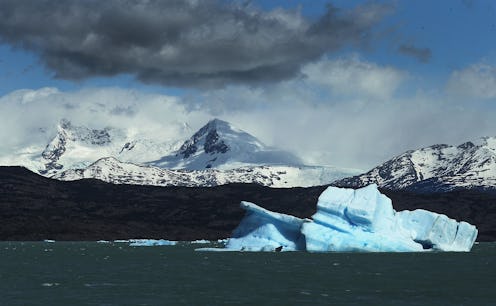News
A Giant Iceberg Appeared Off The Coast Of Canada

In the latest edition of "Just Canada Things," a large iceberg made its way to Canada's "Iceberg Alley" over the weekend, giving Newfoundland tourists and residents alike a show of ecological beauty. As the Iceberg Alley nickname suggests, it is reportedly common to see giant chunks of ice floating by the very-eastern coast of Newfoundland, but the commonality makes the current scene no less grand. Passersby have begun to crowd Newfoundland's coastal streets for a photo op with the large iceberg, as the potential exists for more glacier pieces to appear in the coming weeks and months. However, the icebergs could also mean bad news for the climate.
According to the Canadian Ice Service (yes, that's a real agency), the iceberg that appeared near the town of Ferryland during the Easter weekend is classified as "large." That means it stands up about 150 to 250 feet above sea level and extends as much as 650 feet below the water's surface. In other words, the iceberg that's currently making headlines could be significantly larger than the 'berg that sank the Titanic. Still, it's nowhere near the biggest classification of icebergs tracked by the Canadian Ice Service. A "very large berg" would extend more than 250 feet above sea level and more that 650 feet below.
According to BBC News, the icebergs often float by Newfoundland during the spring and summer months because they break off of larger pieces of sea ice further north in the arctic region. This year's "iceberg season" has been particularly busy, with hundreds of iceberg sightings already reported.
While the iceberg sightings are good news for Instagram users, they may be bad news for the environment. According to Travel & Leisure, scientists have warned that the increased presence of icebergs this early in the season could be a result of climate change. (Apologies if you thought you had finally found some good iceberg news.)
For better or for worse, the large iceberg that popped up near Newfoundland over the weekend could be there to stay. The portion of ice that extends below the surface of the water, much larger than what is visible above sea level, is likely anchoring the berg to land. As a result, the iceberg — and any others that may join it — could drive tourism and related economic activity to the coastal town of Ferryland. At the very least, the stunning photos of the massive iceberg floating south so early in the season could at least raise awareness of the potential impacts of climate change.